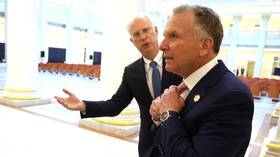Gender parity is now 132 years away – WEF

Women are bearing the brunt of the current recession and cost-of-living crisis, with the Covid-19 pandemic and several economic shocks standing in the way of closing the gender gap, the World Economic Forum reported on Wednesday.
In its Global Gender Gap Report 2022, the WEF estimated that – at the current rate of progress – it will take 132 years for men and women to reach full parity, with the global gender gap being closed by 68.1%. The Geneva-based NGO noted that it’s a slight improvement from 136 years – a figure projected in 2021 – but said there was still a lot of work to do.
According to the document, the pandemic has made the gender disparity much worse, because it hit many women-dominated sectors, including travel, retail, and tourism industries.
“The current recession, unlike past economic slumps that have tended to be worse for men, is disproportionately bad for women,” the report said.
At the same time, the Forum argues that the transition to a gender-equal world could be fast-tracked through adequate salaries for essential workers, investment in infrastructure, and political empowerment.
The research also rated various continents in terms of their progress on the path towards gender parity, with North America and Europe closing more than 76% of their gender gap. Other regions are trailing behind, including Latin America and the Caribbean (72.6%), Central Asia (69.1%) and East Asia and the Pacific (69%). The lowest performance has been demonstrated by South Asia, which closed 62.4% of its gender gap in 2022.
It also gave a breakdown by country on gender equality, giving top marks to Iceland and several Nordic countries, as well as New Zealand, Rwanda, Nicaragua, and Namibia. Nonetheless, the study notes that no country has achieved full gender parity.














